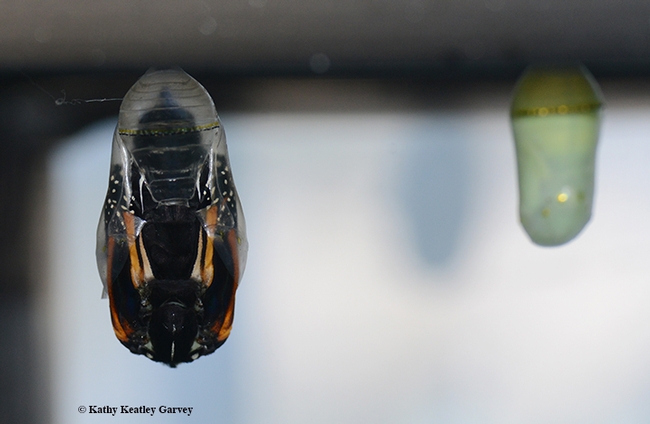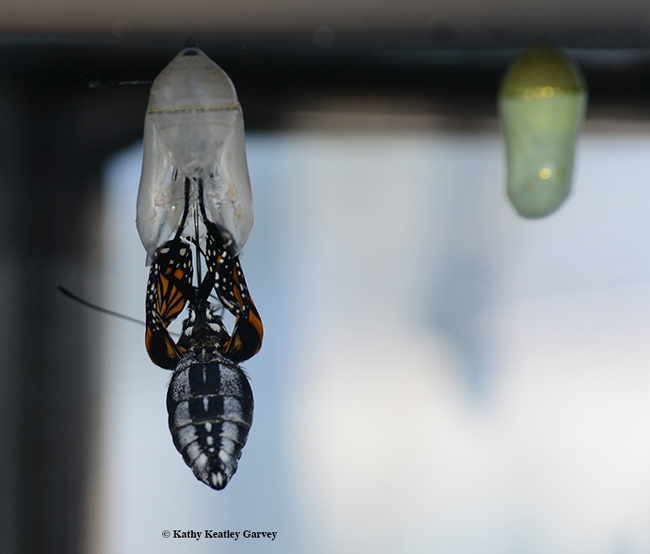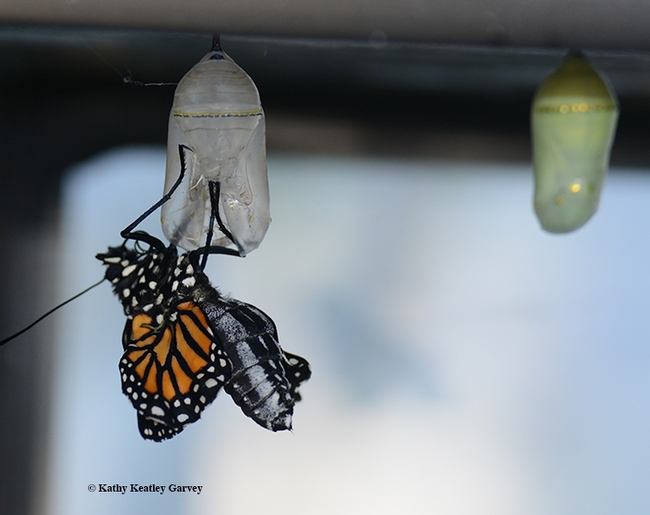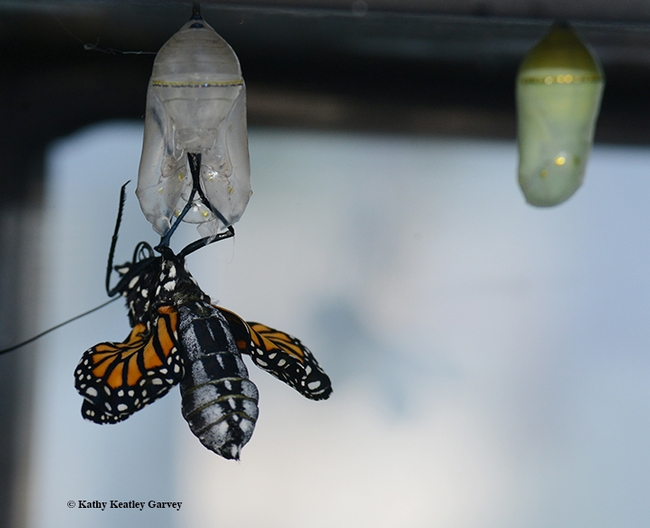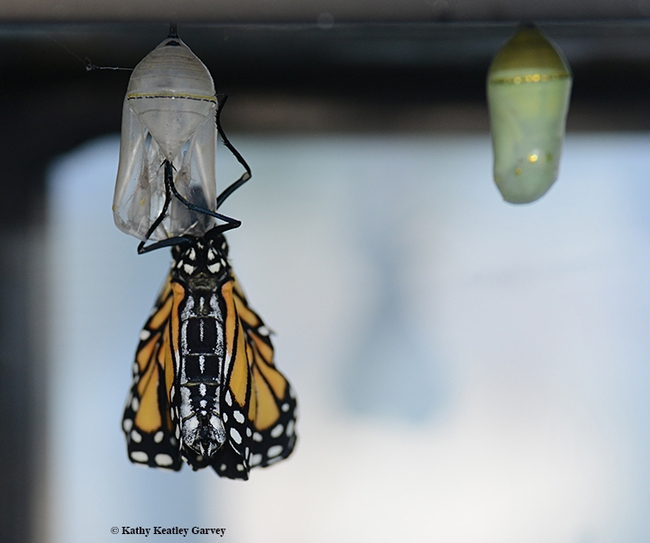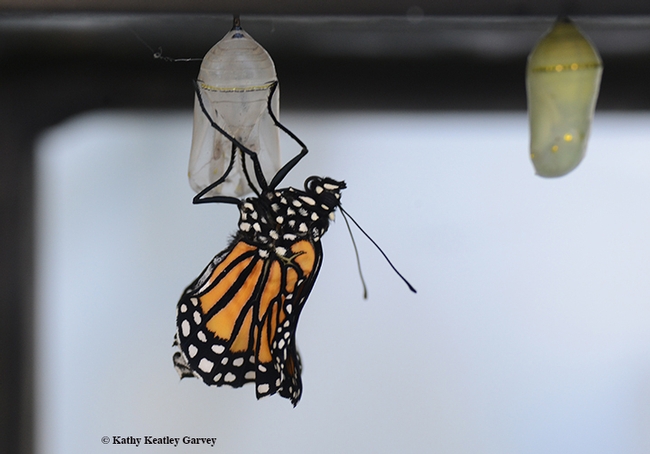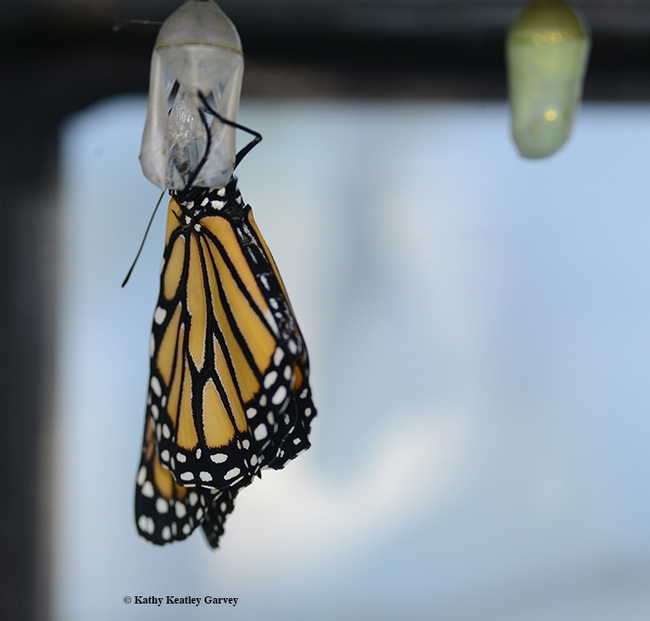- Author: Kathy Keatley Garvey
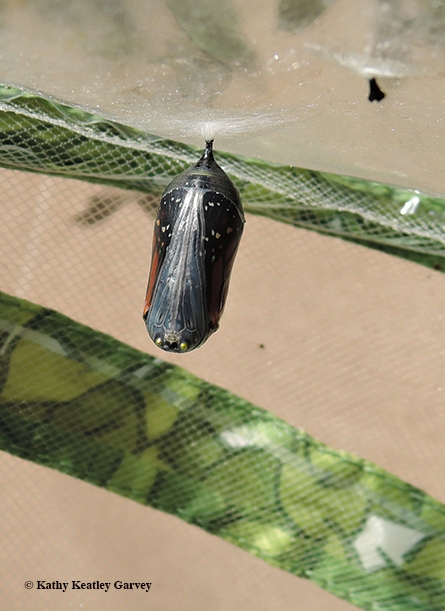
It's a magical moment.
First an egg, then a caterpillar, then a chrysalis, and then a butterfly, Danaus plexippus.
We took some images of a monarch eclosing back on Sept. 10, 2016. It was late in the season. While other monarchs were migrating to coastal California, some were fluttering into our yard in Vacaville, Calif., nectaring on blossoms, mating, and laying eggs on milkweed, their host plant.
The caterpillar, from the first instar to the fifth instar, munches the milkweed like there's no tomorrow (maybe there isn't?), and then forms an emerald green chrysalis, dotted with gold that's reminiscent of royalty. When it turns transparent, you can see the familiar black and orange wings, a promise of what's to come.
It takes about two weeks for an adult butterfly to emerge from its chrysalis and then it slides out--swoosh!--and hangs upside down, pumping fluids into its expanding wings. When the wings dry, off it goes. Sometimes it soars high into the sky. Sometimes it just lingers.
If you're a butterfly aficionado, you never get tired of watching that magical moment when a monarch ecloses.
Here's to Independence Day and to America's favorite butterfly, the monarch.
